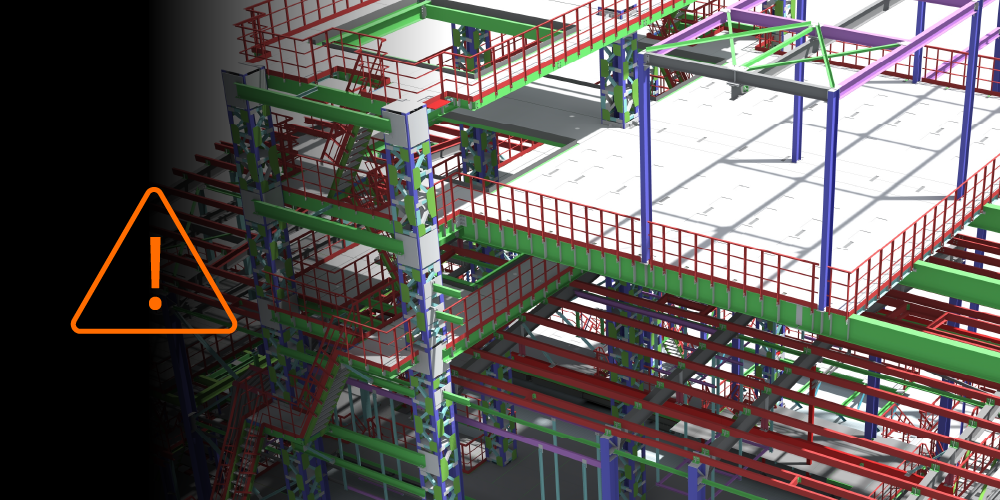Related Articles
— 5 min read
Hidden Costs of Chaos: Why Fragmented Information Threatens Your Project’s Bottom Line


Last Updated Sep 10, 2025

Sean Doran
Enterprise Solution Specialist
Sean is a Solutions Engineer at Procore with a background in civil engineering and construction management, with over a decade of experience across project management, engineering, and functional consulting. He’s held various site based roles for Multiplex as well as Project Manager at TSA Management and has a deep understanding of cloud-based construction platforms, including Procore. With a passion for solving complex challenges and a commitment to continuous learning, Sean enjoys sharing practical insights to help construction professionals improve processes, embrace innovation, and stay ahead in a rapidly evolving industry.

Andrew Janse
Senior Document Controller
Andrew is a highly experienced Document Controller at Hutchinson Builders, with more than 30 years in the construction industry. He plays a key role in ensuring projects operate with the most current and accurate documentation, from design drawings to shop drawings. Starting his career on the Australia Stadium project in Homebush, Andrew taught himself document control by working closely with design teams and even learning computers in the early 1990s. Since then, he has adapted seamlessly to every major industry shift, from carbon copy transmittals and ammonia printing to today’s digital platforms. Always keen to learn, Andrew embraces new technologies and is effective at adopting software systems that streamline project delivery. Known for his strong leadership and people skills, Andrew plays a key role in change management and teaching document control processes, emphasising attention to detail and the importance of following protocols to avoid delays. Respected by colleagues, subcontractors, and clients alike, he is often called upon to guide others on how best to utilise project systems.
Last Updated Sep 10, 2025

Every single decision on a construction site has the potential to either benefit or imperil the overall trajectory of the project. That is why the chain of responsibility and communication captured in documents including emails, drawings, schematics, RFIs and ITPs is so critical.
Managed effectively, it provides a shared, single source of truth that ensures accountability, supports efficiency and underpins the delivery of the project on time, within budget and to the appropriate standards of quality and compliance. When the information coordination is suboptimal, the impacts can range from minor delays through to major risks of budget blow outs, non-compliance or litigation.
Table of contents
Rework: The Most Visible Symptom of Poor Information Flow
One of the most common and costly issues that often can be traced back to deficiencies in document management is rework. If teams on site are not using the most up-to-date drawings and documentation, there are good odds that work will not be correct. And if the issue is not quickly identified, following or intersecting trades are likely to compound the issue.
I've seen it firsthand: a subcontractor builds something completely wrong because they didn't have the updated documents. They had an old drawing. It’s a huge cost to the project when you’ve got to rip out something that’s been built incorrectly. We’re talking massive costs in time, money, and resources, all because a critical update wasn't seen.

Sean Doran
Enterprise Solution Specialist
Procore
The Engine Room of a Well-Run Project
Document control is not just an administrative function—it’s the engine room of efficient information flow. Effective document control ensures information flow in both directions – into the central project management team, and outward to the trades, consultants, suppliers and other stakeholders.
Everything that occurs in a construction project relies on the drawings being absolutely up to date. And behind that is a process of managing all incoming updates and variations for the appropriate review, action, sign off and distribution.
Whilst construction has come a long way in the last 50 years, there's still a drawing that needs to be utilised. So, you need to make sure it's the right drawing, and that it's being sent through the right checks and approvals with consultants and sign off so that you don't have any surprises.

Andrew Janse
Senior Document Controller
Hutchinson Builders
Drawings and specifications are only the beginning. Final handover documentation must also include a range of supplementary material:
- Material Safety Data Sheets (MSDS)
- Product warranties
- Technical manuals
- Environmental Product Declarations (EPDs)
- Safety instructions
Credible Communication: The Backbone of Trust and Accountability
On many projects, meeting minutes, email communications and other coordination and planning communications also form part of the core documentation.
Having a clear record of what was decided, who was involved in the decision, and who is to be held accountable for any relevant actions creates clarity. The timing of discussions and decisions is also recorded, which is invaluable evidence if there is a dispute, for example, a variation was not actioned even though it had been approved by the project management team.
When communication documentation is well coordinated, it builds trust across teams. Everyone has visibility of discussions and a shared understanding of what’s happening and why. If things do go wrong, everyone has the information to understand the root cause of what has happened. This is also invaluable for maintaining a culture of continuous improvement and learning how to improve processes for the next project.
Get It Right from the Start
Projects don’t fall apart halfway through—they unravel from the beginning if the right information isn’t shared from the outset.
If you’re not getting the right information at the start, especially for tendering and pricing, you’re just setting yourself up for variations down the track.
Andrew Janse
Senior Document Controller
Hutchinson Builders
Budget creep, time delays, avoidable rework and constant variations are often the result of incomplete or outdated information and documentation issued at tender and contract stage.
This does put the onus on head contractors to collaborate effectively with clients to gain a comprehensive and buildable brief. The communications and negotiations around this are crucial documentation that form the foundation of the project.
This is also the starting point for the all-important audit trail every major project needs to consider. This chain of communication and documentation ensures that if any questions or conflicts or disputes arise, everything has a trail back to who made what decision and when.
People, Process and Platform: The Pillars of Effective Document Control
A skilled document controller will establish effective systems and processes that ensure information and communication flows are timely, reliable and effective. Their role is not only to coordinate the formal element of receipt, reviews, signoffs and distribution. They ensure that:
- Every document is received, reviewed, approved and distributed properly.
- All stakeholders—from subcontractors to suppliers—are following the agreed protocols.
- Training and onboarding is provided where needed (especially when clients mandate specific systems or platforms).
But even the best people and processes can’t overcome poor systems.
Documentation can’t live in inboxes. When critical information is locked in private emails or siloed folders, access is lost the moment a team member leaves. A centralised, cloud-based platform is essential for maintaining visibility, clarity, and accountability throughout the project lifecycle.
We need to make sure that we compile and collect all the information that we need on one platform.
Andrew Janse
Senior Document Controller
Hutchinson Builders
Using a central platform for coordination and traceability also creates a solid evidence trail for distribution of vital documentation including variations, updated drawings, revised schedules, financials and so forth.
Control the Chaos Before It Costs You
At its core, effective document control protects the fundamentals of construction delivery. When information flows freely and accurately across all stakeholders, communication becomes faster and clearer. Mistakes and disputes are less likely, and when they do occur, they’re easier to resolve.
Instead of chasing down missing details or correcting preventable errors, your team can focus on what really matters: managing productivity, upholding quality, and delivering the project on time.
Categories:
Written by

Sean Doran
Enterprise Solution Specialist | Procore
Sean is a Solutions Engineer at Procore with a background in civil engineering and construction management, with over a decade of experience across project management, engineering, and functional consulting. He’s held various site based roles for Multiplex as well as Project Manager at TSA Management and has a deep understanding of cloud-based construction platforms, including Procore. With a passion for solving complex challenges and a commitment to continuous learning, Sean enjoys sharing practical insights to help construction professionals improve processes, embrace innovation, and stay ahead in a rapidly evolving industry.
View profile
Andrew Janse
Senior Document Controller | Hutchinson Builders
Andrew is a highly experienced Document Controller at Hutchinson Builders, with more than 30 years in the construction industry. He plays a key role in ensuring projects operate with the most current and accurate documentation, from design drawings to shop drawings. Starting his career on the Australia Stadium project in Homebush, Andrew taught himself document control by working closely with design teams and even learning computers in the early 1990s. Since then, he has adapted seamlessly to every major industry shift, from carbon copy transmittals and ammonia printing to today’s digital platforms. Always keen to learn, Andrew embraces new technologies and is effective at adopting software systems that streamline project delivery. Known for his strong leadership and people skills, Andrew plays a key role in change management and teaching document control processes, emphasising attention to detail and the importance of following protocols to avoid delays. Respected by colleagues, subcontractors, and clients alike, he is often called upon to guide others on how best to utilise project systems.
View profileExplore more helpful resources

Managing Direct Costs in Construction: How Visibility Drives Profitability
Direct costs define the financial reality of every construction project. They cover the labour, materials, and equipment that drive delivery and determine profitability. But even the best-planned budgets can shift...

BIM Clash Detection: Reducing Rework, Delays, and Risk in Construction
Design clashes can be a significant hidden cost in construction, as each conflict between systems risks expensive rework, project delays, and reduced margins. BIM clash detection empowers teams to identify...

Next-Gen Job-Costing: Ready to Move? 5 Things to Consider Before You Get Started
In this three-part series, Quantity Surveyor turned Financial Solutions Specialist Clint Burgess uncovers the real-world gains for people, processes, and profits when businesses move from legacy to next-generation Enterprise Resource...

From Workarounds to Workflow: Solving Construction’s Legacy Job-Costing System Challenges with Next-Gen Tools
In this three-part series, Quantity Surveyor turned Financial Solutions Specialist Clint Burgess uncovers the real-world gains for people, processes, and profits when businesses move from legacy to next-generation Enterprise Resource...
